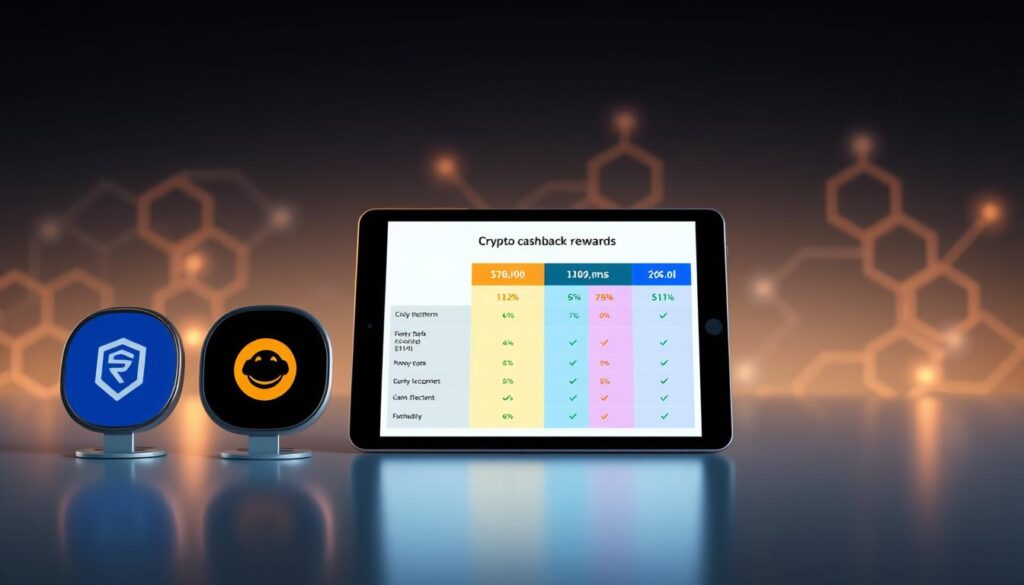Now Reading: Liquid Staking Derivatives: Unlocking Liquidity in Staked Assets
- 01
Liquid Staking Derivatives: Unlocking Liquidity in Staked Assets
Liquid Staking Derivatives: Unlocking Liquidity in Staked Assets

Cryptocurrency investors face a common dilemma: earning rewards through blockchain networks often means locking up assets for extended periods. New solutions now let users secure their holdings and keep funds accessible. These innovations account for over 26% of all decentralized finance activity, reshaping how people interact with digital assets.
Traditional participation in network validation required significant upfront commitments. Users needed 32 ETH to run independent nodes, creating barriers for smaller investors. Modern protocols eliminate this hurdle through flexible tokenization methods. Participants receive tradeable tokens representing their locked positions, maintaining exposure to rewards while freeing capital.
The market for these financial tools has surged to $12.36 billion, trailing only lending platforms and decentralized exchanges. This growth stems from their ability to combine security contributions with liquidity access. Users can now deploy assets across multiple platforms simultaneously, multiplying earning potential without compromising network support.
Key Takeaways
- Tokenized staking positions dominate DeFi activity, capturing over a quarter of total locked value
- New protocols remove minimum investment requirements for blockchain validation
- Tradable receipt tokens enable simultaneous participation in multiple yield opportunities
- Flexible asset usage drives integration with decentralized exchanges and lending markets
- Continuous reward generation coexists with portfolio mobility in modern systems
This transformation creates opportunities for both individual investors and decentralized applications. Platforms leveraging these mechanisms demonstrate how blockchain networks evolve to meet user demands. The following sections explore the technical foundations and market forces behind this financial revolution.
Understanding Staking Fundamentals
Blockchain networks rely on user participation to maintain security and validate transactions. Proof-of-Stake (PoS) systems achieve this through validators who lock cryptocurrency as collateral. These participants verify transactions and propose new blocks, earning rewards while securing the network.
To become a validator on Ethereum, users must commit 32 ETH—a requirement that limits access for smaller investors. This deposit acts as a security measure, ensuring honest behavior. Validators face penalties like slashing if they act maliciously or go offline, protecting the protocol from attacks.
Rewards typically range from 4% to 12% annually, varying by network activity and rules. However, locked assets remain unavailable for trading or other investments during the staking period. This creates opportunity costs that newer solutions aim to address while preserving the core benefits of PoS systems.
Exploring Liquid Staking: Key Concepts and Variants
Digital asset holders no longer need to choose between earning rewards and accessing their funds. Modern protocols convert locked positions into versatile tools through tokenization. This innovation lets investors support blockchain operations while keeping their assets active across financial platforms.

What Is Liquid Staking?
Providers handle technical validation tasks when investors deposit crypto assets. In return, participants receive tradeable tokens that mirror their locked holdings. Platforms like Lido issue stETH for Ethereum deposits, while Rocket Pool distributes rETH—both act as redeemable receipts and collateral.
These tokens accumulate rewards automatically through smart contracts. Owners can swap them on exchanges or leverage them in DeFi liquidity pools immediately. Unlike conventional methods, there’s no waiting period for withdrawals or minimum deposit thresholds.
Traditional Staking vs. Liquid Staking
Standard validation requires fixed-term commitments with frozen assets. Tokenized alternatives remove this limitation entirely. Users gain two revenue streams: base rewards from network participation and secondary yields through decentralized applications.
Capital efficiency becomes the decisive factor. While older systems tie up funds for weeks, modern solutions let investors pivot strategies instantly. This flexibility explains why over 18% of Ethereum’s supply now circulates as tokenized stakes rather than locked deposits.
Liquid Staking Derivatives: Mechanisms and Benefits
Financial innovation transforms locked crypto assets into dynamic tools through liquid staking derivatives. These digital certificates track staked ETH positions while accumulating rewards automatically. Two primary systems govern their operation: rebasing adjusts token quantities, while non-rebasing enhances value through exchange rate shifts.
Rebasing mechanisms distribute earnings as additional tokens in user wallets. Each reward cycle increases holdings visibly, simplifying progress tracking. Non-rebasing alternatives maintain fixed quantities but boost individual token worth against the base asset. Over 80% of platforms favor this method, letting users watch their portfolio’s purchasing power grow steadily.
Key advantages emerge from both approaches:
- Zero-maintenance yields: Rewards compound automatically without manual claims
- Gas fee elimination: Small investors avoid costly transaction fees
- Instant liquidity: Trade positions or collateralize loans instantly
These financial instruments maintain direct ties to original staked ETH balances. Holders redeem tokens for principal plus accumulated earnings at any time. This flexibility supports diverse strategies – from quick trades to long-term value appreciation plays. As blockchain ecosystems evolve, such mechanisms bridge passive income with active portfolio management.
Integration with DeFi Protocols and Liquidity Pools
Modern financial ecosystems thrive when assets serve multiple purposes simultaneously. Tokenized staking positions now power innovative strategies across decentralized platforms. Users amplify earnings by connecting these assets to DeFi protocols, creating layered income streams from single investments.

Curve Finance’s stETH-ETH pool demonstrates this synergy. Participants earn trading fees while maintaining exposure to Ethereum validation rewards. Though occasional price gaps occur, these pools stabilize markets by enabling seamless conversions between tokenized and base assets.
Three primary activities dominate this space:
- Depositing tokens into lending platforms like Aave to borrow funds
- Providing liquidity for automated market maker exchanges
- Stacking platform incentives with base staking yields
Money markets unlock new possibilities. Users collateralize tokenized positions to access loans without interrupting reward accumulation. This approach lets investors pursue opportunities while their primary assets keep working.
The composability of DeFi protocols enables complex strategies. A single deposit might generate staking rewards, trading fees, and lending interest simultaneously. However, these layered yield opportunities require careful risk assessment, as multiple platform exposures can compound potential losses.
Earning Staking Rewards and Managing Risks
Investors seeking passive income through blockchain networks now face critical choices between reward potential and asset flexibility. Tokenized solutions let users accumulate value while maintaining portfolio mobility, but require careful risk evaluation.
Benefits of Continuous Yield
Automatic compounding creates exponential growth for long-term holders. Each reward cycle adds to the principal balance, letting investors earn returns on both initial deposits and accumulated gains. This system requires no manual intervention – ideal for passive strategies.
Diversification across multiple service providers minimizes exposure to single points of failure. Platforms like those listed among the best crypto staking platforms spread assets across numerous validators. This approach stabilizes returns even if individual nodes underperform.
Risk Factors and Mitigation Strategies
Network penalties called slashing can reduce earnings if validators malfunction. While rare, these events highlight the importance of choosing providers with strong technical infrastructure. Leading services implement redundant systems to prevent downtime.
Smart contract vulnerabilities pose another challenge. Investors should prioritize audited protocols with bug bounty programs. Regular code reviews and insurance funds provide additional safety nets against potential exploits.
Yield fluctuations remain inevitable due to changing network conditions. Active monitoring helps users adjust strategies as participation rates shift. Combining tokenized positions with traditional investments creates balanced exposure to crypto markets.
Restaking and Its Impact on Your Portfolio
Portfolio strategies evolve as crypto investors seek to maximize returns from idle assets. Restaking lets users stack rewards by deploying tokenized positions across multiple platforms. This approach turns stETH and similar assets into versatile tools for compounding growth.

Here’s how it works: Investors first convert ETH into stETH through validation services. These tokens then move to secondary platforms offering additional rewards. Each layer creates new earning opportunities while keeping the original stake active.
Key portfolio impacts include:
- Compounded yields: Earnings from initial staking generate further rewards when redeployed
- Protocol diversity: Exposure to multiple networks spreads opportunity and risk
- Liquidity maintenance: stETH remains tradable despite being used in restaking strategies
However, complexity increases with each platform added. Different withdrawal periods and reward schedules require careful tracking. A single restaking position might involve three separate protocols with unique rules.
Security risks multiply as assets move through multiple smart contracts. While stETH itself is battle-tested, newer platforms may have undiscovered vulnerabilities. Successful users balance aggressive yield-seeking with thorough platform audits.
Reward potential makes restaking attractive – some strategies double base yields through strategic token recycling. But remember: higher returns always correlate with increased exposure to technical and market risks.
Comparing Popular Liquid Staking Platforms
Platform diversity drives innovation in blockchain finance, with each service offering distinct advantages. Leading providers balance accessibility, returns, and network security through tailored solutions. Let’s examine how major players stack up in this competitive landscape.
Market Leaders: Lido, Rocket Pool, and Coinbase
Lido dominates with 75% market share through its stETH token. This protocol became the industry standard by integrating with most DeFi platforms. Users pay 10% fees but gain unmatched liquidity across exchanges and lending markets.
Rocket Pool champions decentralization. Individual operators can participate with just 16 ETH, supported by RPL token incentives. Its unique node pooling system maintains security while lowering entry barriers – a favorite among community-focused users.
Coinbase targets traditional investors through cbETH. The exchange’s institutional-grade infrastructure appeals to compliance-conscious users. However, limited DeFi integration reduces utility compared to competitors.
Innovative Approaches from Frax and Others
Frax Finance disrupts the market with 6-10% yields via its dual-token system. The platform uses 8% fees for token buybacks, boosting sfrxETH value. This model attracts yield-seekers willing to navigate complex tokenomics.
Emerging competitors bring fresh ideas:
- Stader’s ETHx combines multi-chain support with insurance funds
- Redacted Cartel integrates governance rewards with staking yields
- Ankr Protocol focuses on enterprise validator services
Fee structures vary widely. Rocket Pool distributes 5-20% to node operators, while Lido shares rewards with service providers. As the sector matures, user experience and cross-chain functionality become key battlegrounds.
ETH Staking Outlook in the Post-Shanghai Era
The Ethereum network entered a new phase of accessibility following its April 2023 protocol changes. These adjustments removed critical barriers for participants seeking flexible asset management.
Unlocking Liquidity Through the Shanghai Upgrade
The Shanghai Upgrade introduced withdrawal capabilities for staked ETH, addressing a key concern for long-term investors. Over 40% of Ethereum’s circulating supply now supports network security, up from 15% pre-upgrade. This surge reflects renewed confidence in ETH’s dual role as both collateral and liquid asset.
Market dynamics shifted as participants gained exit options without sacrificing rewards. Validators can now access principal deposits after a brief queue period, creating a new equilibrium between locked and liquid holdings. Platforms report increased small investor activity since these changes took effect.
Current systems enable instant conversions for tokenized positions while maintaining blockchain participation. This balance helps stabilize ETH’s market presence across exchanges and lending protocols. As decentralized finance evolves, these upgrades ensure Ethereum remains central to innovative yield strategies.
FAQ
How do blockchain networks utilize asset locking?
Networks like Ethereum require participants to lock tokens as collateral to validate transactions. This process secures the network and generates rewards proportional to the locked amount.
What distinguishes flexible asset protocols from conventional methods?
Flexible protocols issue tradeable tokens representing locked assets, enabling users to access decentralized finance (DeFi) markets while still earning validator rewards. Traditional methods keep assets immobilized.
Can I use tokenized collateral across multiple platforms?
Yes. Tokens like stETH or rETH can be deposited into lending markets, liquidity pools, or yield farms on platforms such as Aave or Curve to compound returns through additional activities.
What risks accompany synthetic yield instruments?
Primary risks include smart contract vulnerabilities, validator penalties, and market price fluctuations. Diversifying across providers like Lido and Rocket Pool reduces exposure to single points of failure.
How does restaking affect portfolio exposure?
Restaking amplifies potential rewards by reusing tokenized assets across multiple protocols but increases complexity. Tools like EigenLayer require careful risk assessment of layered agreements.
Which platforms lead in Ethereum-based solutions?
Lido dominates with over 30% market share, while Rocket Pool offers decentralized node operations. Coinbase’s cbETH caters to institutional needs, and Frax explores hybrid algorithmic models.
How did Ethereum’s 2023 upgrade change asset dynamics?
The Shanghai update allowed withdrawals of previously locked ETH, improving liquidity confidence. This catalyzed institutional adoption and boosted secondary market activity for wrapped tokens.












